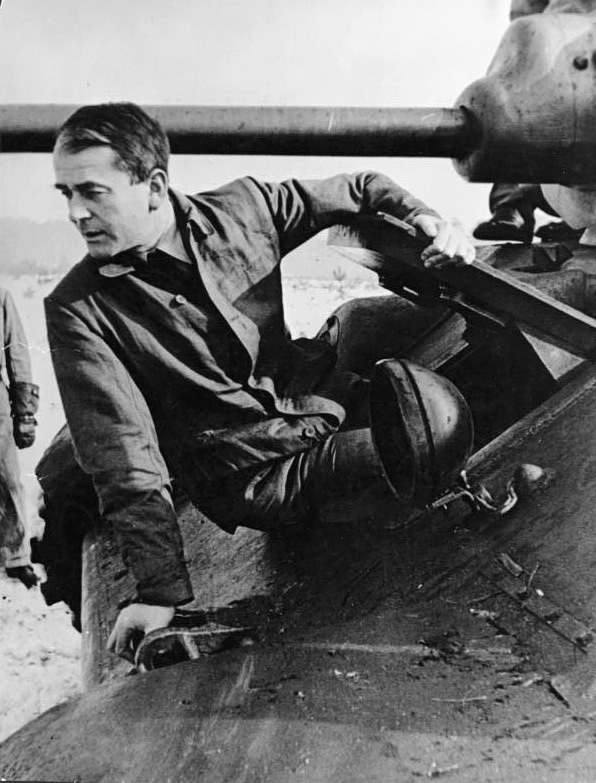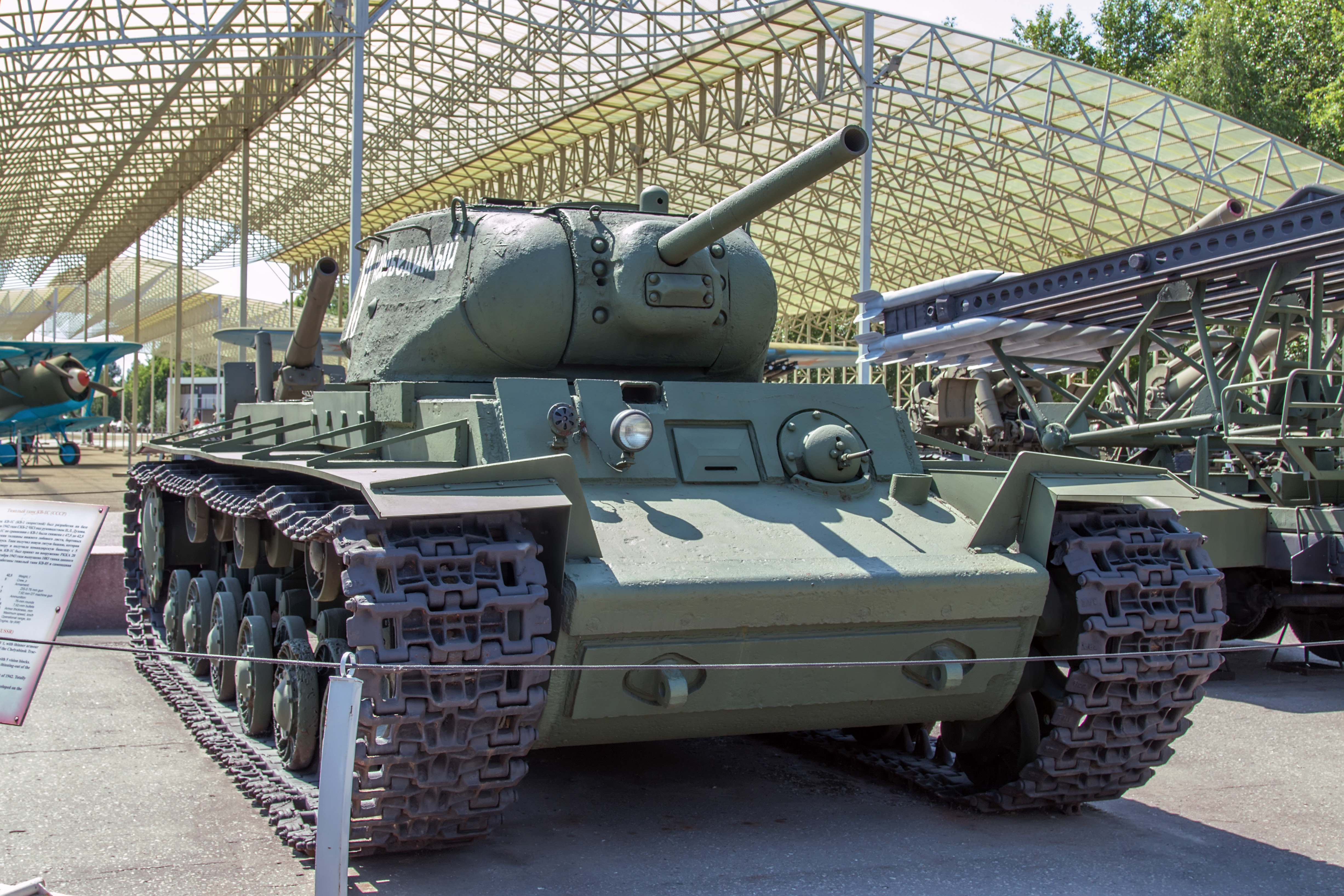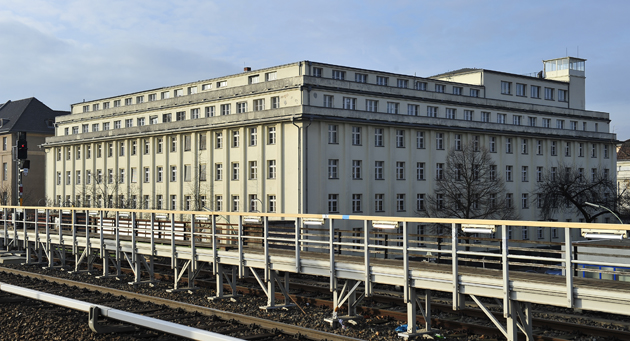|
VK 20
The VK 20 series were the proposed replacements of the Panzer IV and Panzer III tanks with entries by MAN, Krupp and Daimler Benz. It was initially projected to weigh 20 tonnes, but grew to 24 tonnes. By November 1941, the designs almost reached completion but against the professional judgement of Wa Pruef 6, political interference in December 1941 led to all of the designs being dropped. The root of this adverse decision came from encounters with increasing numbers of T-34 and KV-1 tanks. Reichsminister Fritz Todt declared that a new tank, 30 tons in weight should be designed and produced. Oberst Fichtner argued that time would be lost developing this new 30 ton tank, the number produced would be reduced and engineer bridges could not support such a tank. This new tank chosen from the VK 30 series would become the Panther, replacing the VK 20 series. This decision would place the rushed MAN Panther into production as Germany's new standard medium tank, which was plagued with issue ... [...More Info...] [...Related Items...] OR: [Wikipedia] [Google] [Baidu] |
Germany
Germany,, officially the Federal Republic of Germany, is a country in Central Europe. It is the second most populous country in Europe after Russia, and the most populous member state of the European Union. Germany is situated between the Baltic and North seas to the north, and the Alps to the south; it covers an area of , with a population of almost 84 million within its 16 constituent states. Germany borders Denmark to the north, Poland and the Czech Republic to the east, Austria and Switzerland to the south, and France, Luxembourg, Belgium, and the Netherlands to the west. The nation's capital and most populous city is Berlin and its financial centre is Frankfurt; the largest urban area is the Ruhr. Various Germanic tribes have inhabited the northern parts of modern Germany since classical antiquity. A region named Germania was documented before AD 100. In 962, the Kingdom of Germany formed the bulk of the Holy Roman Empire. During the 16th ce ... [...More Info...] [...Related Items...] OR: [Wikipedia] [Google] [Baidu] |
T-34
The T-34 is a Soviet medium tank introduced in 1940. When introduced its 76.2 mm (3 in) tank gun was less powerful than its contemporaries while its 60-degree sloped armour provided good protection against Anti-tank warfare, anti-tank weapons. The Christie suspension was inherited from the design of American J. Walter Christie's M1928 tank, versions of which were sold turret-less to the Red Army and documented as "farm tractors", after being rejected by the U.S. Army. The T-34 had a profound effect on the conflict on the Eastern Front (World War II), Eastern Front in the World War II, Second World War, and had a short lasting impact on tank design. After the Germans encountered the tank in 1941 during Operation Barbarossa, German general Paul Ludwig Ewald von Kleist called it "the finest tank in the world" and Heinz Guderian affirmed the T-34's "vast superiority" over German tanks. Alfred Jodl, chief of operations staff of the German armed forces noted in his war diar ... [...More Info...] [...Related Items...] OR: [Wikipedia] [Google] [Baidu] |
World War II Tanks Of Germany
In its most general sense, the term "world" refers to the totality of entities, to the whole of reality or to everything that is. The nature of the world has been conceptualized differently in different fields. Some conceptions see the world as unique while others talk of a "plurality of worlds". Some treat the world as one simple object while others analyze the world as a complex made up of many parts. In ''scientific cosmology'' the world or universe is commonly defined as " e totality of all space and time; all that is, has been, and will be". '' Theories of modality'', on the other hand, talk of possible worlds as complete and consistent ways how things could have been. ''Phenomenology'', starting from the horizon of co-given objects present in the periphery of every experience, defines the world as the biggest horizon or the "horizon of all horizons". In ''philosophy of mind'', the world is commonly contrasted with the mind as that which is represented by the mind. ''Th ... [...More Info...] [...Related Items...] OR: [Wikipedia] [Google] [Baidu] |
Panther Tank
The Panther tank, officially ''Panzerkampfwagen V Panther'' (abbreviated PzKpfw V) with ordnance inventory designation: ''Sd.Kfz.'' 171, is a German medium tank of World War II. It was used on the Eastern and Western Fronts from mid-1943 to the end of the war in May 1945. On 27 February 1944 it was redesignated to just ''PzKpfw Panther'', as Hitler ordered that the Roman numeral "V" be deleted. In contemporary English-language reports it is sometimes referred to as the "Mark V". The Panther was intended to counter the Soviet T-34 medium tank and to replace the Panzer III and Panzer IV. Nevertheless, it served alongside the Panzer IV and the heavier Tiger I until the end of the war. It had excellent firepower, protection and mobility, although its reliability was less impressive. The Panther was a compromise. While having essentially the same Maybach V12 petrol (690 hp) engine as the Tiger I, it had better gun penetration, was lighter and faster, and could traverse roug ... [...More Info...] [...Related Items...] OR: [Wikipedia] [Google] [Baidu] |
VK 30 Series
The Vollketten 30 were two series of tank designs by Germany in World War II, originally intended as heavy 'breakthrough' tanks, but later switching completely to designate medium tanks to succeed the Panzer III, IV, and the planned VK 20 series tanks. These were requested in response to the Soviet T-34 and KV-1 tanks, with far heavier armour and armament than the mobile armoured vehicles fielded by the Wehrmacht at the time. Many German companies submitted projects, including Maschinenfabrik Augsburg-Nürnberg (MAN), Daimler-Benz (DB), Henschel, and Porsche. The winning entry tanks would go on to become the famous Tiger I and Panther tanks, capable opponents to the T-34, but it was ultimately too late and at too small of a scale to affect the course of the war. List of VK 30 series designs The VK 30 series were 30-35 tonne class tank designs. * VK 30.01 (H) -Henschel design for 30-tonne breakthrough tank, two prototypes built. Two hulls were later reused as Sturer Emil. *VK 30. ... [...More Info...] [...Related Items...] OR: [Wikipedia] [Google] [Baidu] |
Oberst Fichtner
''Oberst'' () is a senior field officer rank in several German-speaking and Scandinavian countries, equivalent to colonel. It is currently used by both the ground and air forces of Austria, Germany, Switzerland, Denmark, and Norway. The Swedish rank '' överste'' is a direct translation, as are the Finnish rank ''eversti'' and the Icelandic rank ''ofursti''. History and origins is a German word. Spelled with a capital O, "" is a noun and defines the military rank of colonel or group captain. Spelled with a lower case o, or "", it is an adjective, meaning "top, topmost, uppermost, highest, chief, head, first, principal, or supreme". Both usages derive from the superlative of , "the upper" or "the uppermost". As a family name, ''Oberst'' is common in the southwest of Germany, in the area known as the Black Forest (''Schwarzwald''). The name is also concentrated in the north-central cantons of Switzerland ( Aargau & Zürich). Here the Swiss version of ''Oberst'' is spelled ''O ... [...More Info...] [...Related Items...] OR: [Wikipedia] [Google] [Baidu] |
Fritz Todt
Fritz Todt (; 4 September 1891 – 8 February 1942) was a German construction engineer and senior Nazi who rose from the position of Inspector General for German Roadways, in which he directed the construction of the German autobahns (''Reichsautobahnen''), to become the Reich Minister for Armaments and Ammunition. From that position, he directed the entire German wartime military economy. Before the beginning of World War II, he initiated what Hitler called ''Organisation Todt'', a military-engineering company that supplied industry with forced labour, built fortifications such as the ''Westwall'' and Atlantic Wall with that labour, and administered construction of the Nazi concentration camps in the late phase of Nazi Germany. Todt died in an aircraft crash in 1942. Early life and education Todt was born in Pforzheim in the Grand Duchy of Baden (now in Baden-Württemberg) to Emil Todt (1861–1909) and his wife, Elise, née Unterecker (1869–1935). His father owned a sm ... [...More Info...] [...Related Items...] OR: [Wikipedia] [Google] [Baidu] |
Kliment Voroshilov Tank
The Kliment Voroshilov (KV) tanks are a series of Soviet heavy tanks named after the Soviet defence commissar and politician Kliment Voroshilov who operated with the Red Army during World War II. The KV tanks were known for their heavy armour protection during the early stages of the war, especially during the first year of the German invasion of the Soviet Union. In certain situations, even a single KV-1 or KV-2 supported by infantry could halt German formations. The German ''Wehrmacht'' at that time rarely deployed its tanks against KVs, as their own armament was too poor to deal with the "''Russischer Koloss''" – "Russian Colossus". The KV tanks were practically immune to the 3.7 cm KwK 36 and howitzer-like, short-barreled 7.5 cm KwK 37 guns mounted, respectively, on the early Panzer III and Panzer IV tanks fielded by the invading German forces. Until the Germans developed more effective guns, the KV-1 was invulnerable to almost any German weapon except the 8.8 cm Flak gun. ... [...More Info...] [...Related Items...] OR: [Wikipedia] [Google] [Baidu] |
Waffenamt
''Waffenamt'' (WaA) was the German Army Weapons Agency. It was the centre for research and development of the Weimar Republic and later the Third Reich for weapons, ammunition and army equipment to the German Reichswehr and then Wehrmacht The ''Wehrmacht'' (, ) were the unified armed forces of Nazi Germany from 1935 to 1945. It consisted of the ''Heer'' (army), the ''Kriegsmarine'' (navy) and the ''Luftwaffe'' (air force). The designation "''Wehrmacht''" replaced the previous .... It was founded 8 November 1919 as ''Reichwaffenamt'' (RWA), and 5 May 1922 the name was changed to ''Heereswaffenamt'' (HWA). The task of overseeing Germany's gigantic pre-World War II rearmament program was given to the ''Heeresabnahmestelle'' (the Army Acceptance Organization, commonly referred to as the ''Abnahme''), a subsidiary of the ''Heereswaffenamt''. By 1940 the ''Abnahme'' consisted of 25,000 personnel in five departments in 16 inspection areas, augmented by specially selected plan ... [...More Info...] [...Related Items...] OR: [Wikipedia] [Google] [Baidu] |
Medium Tank
A medium tank is a classification of tanks, particularly prevalent during World War II which represented a compromise between the mobility oriented light tanks and the armour and armament oriented heavy tanks. A medium tank's classification is not actually based on weight, but off of tactical usage and intended purpose; for instance the German Panzerkampfwagen V Panther medium tank has a mass similar to contemporary Allied heavy tanks. The most widely produced, cost effective and successful tanks of World War II (the German Panzer IV, the Soviet T-34, and the American M4 Sherman) were all medium tank designs. Many of the medium tank lines became what are called main battle tanks in most countries. History The first tanks to carry the name "Medium" appeared in the First World War with the British Medium Mark A Whippet. It was smaller, lighter and faster than the British heavy tanks of the time and only carried machine guns. The medium tank doctrine came into use in the interwa ... [...More Info...] [...Related Items...] OR: [Wikipedia] [Google] [Baidu] |
Panzer III
The ''Panzerkampfwagen III'', commonly known as the Panzer III, was a medium tank developed in the 1930s by Germany, and was used extensively in World War II. The official German ordnance designation was Sd.Kfz. 141. It was intended to fight other armoured fighting vehicles and serve alongside and support the similar Panzer IV, which was originally designed for infantry support. However, as the Germans faced the formidable T-34, more powerful anti-tank guns were needed, and since the Panzer IV had more development potential with a larger turret ring, it was redesigned to mount the long-barrelled 7.5 cm KwK 40 gun. The Panzer III effectively swapped roles with the Panzer IV, as from 1942 the last version of the Panzer III mounted the 7.5 cm KwK 37 L/24 that was better suited for infantry support. Production of the Panzer III ceased in 1943. Nevertheless, the Panzer III's capable chassis provided hulls for the Sturmgeschütz III assault gun until the end of the war. Development h ... [...More Info...] [...Related Items...] OR: [Wikipedia] [Google] [Baidu] |
Panzer IV
The ''Panzerkampfwagen'' IV (Pz.Kpfw. IV), commonly known as the ''Panzer'' IV, was a German medium tank developed in the late 1930s and used extensively during the Second World War. Its ordnance inventory designation was Sd.Kfz. 161. The Panzer IV was the most numerous German tank and the second-most numerous German fully tracked armoured fighting vehicle of the Second World War; 8,553 Panzer IVs of all versions were built during World War II, only exceeded by the StuG III assault gun with 10,086 vehicles. Its chassis was also used as the base for many other fighting vehicles, including the Sturmgeschütz IV assault gun, the Jagdpanzer IV self-propelled anti-tank gun, the ''Wirbelwind'' self-propelled anti-aircraft gun, and the '' Brummbär'' self-propelled gun. The Panzer IV saw service in all combat theatres involving Germany and was the only German tank to remain in continuous production throughout the war. It was originally designed for infantry support, while the sim ... [...More Info...] [...Related Items...] OR: [Wikipedia] [Google] [Baidu] |






.jpg)

